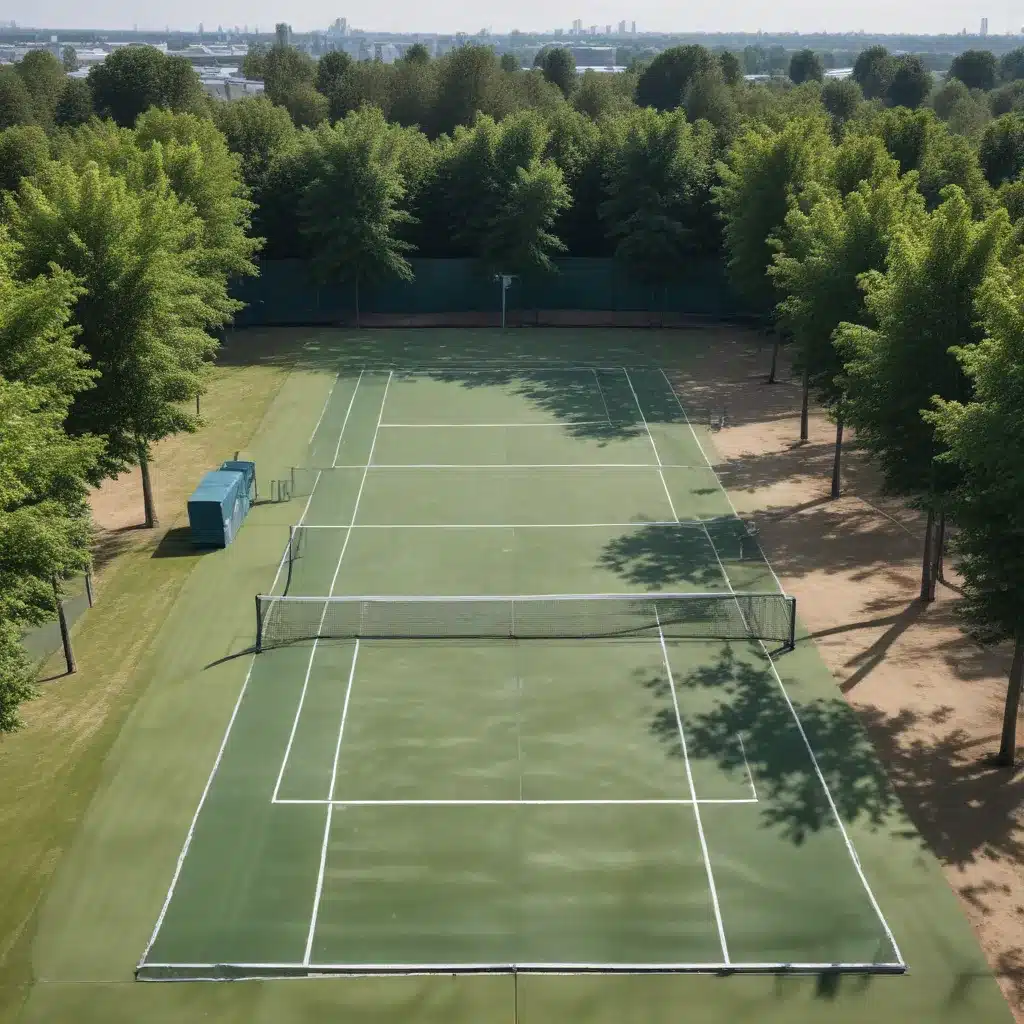
Navigating the Green Revolution in Tennis Infrastructure
As the world becomes increasingly conscious of its environmental impact, the sports industry is undergoing a significant shift towards sustainability. In the realm of tennis, facility owners and managers in London are at the forefront of this green revolution, actively embracing eco-friendly practices and materials to reduce the carbon footprint of their operations.
The adoption of sustainable approaches in tennis court construction and maintenance not only benefits the planet but also offers tangible advantages for players, coaches, and the local community. By understanding the current regulations, best practices, and cost implications, tennis enthusiasts in London can make informed decisions and contribute to a more sustainable future for the sport.
Regulatory Compliance: Adhering to Green Standards
In September 2024, the local authorities in London have implemented stricter regulations regarding the environmental impact of sports facilities. Tennis court operators are now required to comply with a set of guidelines that prioritize the use of sustainable materials, energy-efficient systems, and water conservation measures.
These regulations mandate that a minimum of 50% of the materials used in the construction or refurbishment of tennis courts must be either recycled, recyclable, or sourced from renewable sources. This includes the playing surface, court boundaries, and any supporting infrastructure. Additionally, court lighting and climate control systems must meet specific energy-efficiency standards, with a focus on reducing greenhouse gas emissions and overall energy consumption.
To ensure compliance, tennis facility owners must submit detailed plans outlining their sustainability strategy, which will be reviewed and approved by the local authorities before any construction or renovation work can commence. Regular inspections and reporting requirements are also in place to monitor the ongoing environmental performance of these facilities.
Player Development and Sustainable Training Programs
As the tennis community in London embraces the sustainable ethos, the focus has shifted towards developing training programs that not only enhance player performance but also minimize the environmental impact of these activities.
Many leading tennis academies and coaching centers have implemented eco-friendly practices, such as using renewable energy sources to power their facilities, implementing water-efficient irrigation systems, and incorporating sustainable materials into their court surfaces and equipment storage areas.
These sustainable training programs often include educational components, where players and coaches learn about the importance of environmental stewardship and how their individual actions can contribute to a greener future for the sport. Workshops on topics like reducing waste, conserving water, and promoting sustainable transportation options for players are now integral parts of the training curriculum.
Moreover, some facilities have introduced innovative initiatives, such as recycling used tennis balls and strings, or offering incentives for players who adopt environmentally-friendly habits, such as using reusable water bottles or carpooling to practice sessions.
Advancements in Tennis Technology and Eco-friendly Equipment
The tennis industry in London has also seen significant advancements in the development of eco-friendly equipment and technology, which are transforming the way players and coaches approach the sport.
One notable example is the rise of sustainable tennis court surfaces, which are now being constructed using recycled materials, such as reclaimed plastics and rubber. These surfaces not only provide a durable and high-performance playing experience but also contribute to the reduction of waste and the conservation of natural resources.
Additionally, the latest generation of tennis rackets and strings incorporate environmentally-friendly materials, such as biodegradable or recyclable components, without compromising on quality or performance. This allows players to compete at the highest level while minimizing their environmental impact.
Energy-efficient lighting systems, smart court irrigation controls, and sustainable water management solutions are also being integrated into tennis facilities, further reducing their carbon footprint and operational costs.
Cost Considerations and Long-term Benefits
While the initial investment in sustainable tennis infrastructure may be higher than traditional approaches, the long-term benefits and cost savings make it a compelling proposition for facility owners in London.
Table 1: Estimated Costs for Sustainable Tennis Court Construction in London (as of September 2024)
| Material | Traditional Approach | Sustainable Approach |
|---|---|---|
| Playing Surface | £50 – £80 per sq. m | £60 – £100 per sq. m |
| Court Boundaries | £25 – £40 per linear m | £30 – £50 per linear m |
| Lighting System | £3,000 – £5,000 per court | £4,000 – £7,000 per court |
| Water Management | £2,000 – £4,000 per court | £3,000 – £6,000 per court |
As shown in Table 1, the initial costs for sustainable tennis court construction can be slightly higher than traditional methods. However, the long-term operational savings, reduced maintenance requirements, and potential government incentives or rebates can offset these upfront expenses over time.
Moreover, the adoption of eco-friendly practices can enhance the facility’s reputation and attract environmentally-conscious players, coaches, and community members, potentially leading to increased usage and revenue.
Embracing the Future of Sustainable Tennis in London
The tennis community in London is at the forefront of the green revolution, leading the way in the adoption of sustainable practices and technologies. By embracing this shift, facility owners, coaches, and players can contribute to a more environmentally responsible future for the sport, while also enjoying the benefits of high-quality, energy-efficient, and community-driven tennis infrastructure.
As the local regulations continue to evolve and the demand for sustainable solutions grows, the tennis industry in London is poised to set an example for the rest of the world, demonstrating that it is possible to balance athletic excellence with environmental stewardship. Through collaborative efforts, innovative thinking, and a commitment to sustainability, the future of tennis in London is set to be both thrilling and environmentally conscious.
Cliff Richard Tennis is at the forefront of this movement, offering state-of-the-art sustainable tennis facilities, cutting-edge training programs, and a community-driven approach to the sport. By partnering with local authorities and industry leaders, Cliff Richard Tennis is leading the way in creating a greener, more sustainable future for tennis in London.

